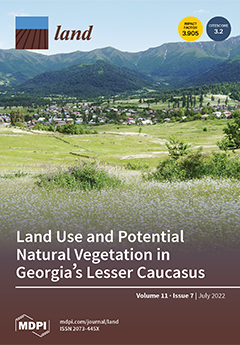Open AccessFeature PaperReview
Riverine Plastic Pollution in Asia: Results from a Bibliometric Assessment
by
Walter Leal Filho, Cagdas Dedeoglu, Maria Alzira Pimenta Dinis, Amanda Lange Salvia, Jelena Barbir, Viktoria Voronova, Ismaila Rimi Abubakar, Arvo Iital, Karin Pachel, Fredrik Huthoff, Ayyoob Sharifi, Peter J. Yang, Maris Klavins and Victoria Omeche Emanche
Cited by 11 | Viewed by 6974
Abstract
Rivers are important ecosystems, vital to the livelihoods of hundreds of millions of humans and other species. Despite their environmental, social, and economic importance, current use of rivers is unsustainable, due to a combination of solid waste and high levels of pollutants. Plastic
[...] Read more.
Rivers are important ecosystems, vital to the livelihoods of hundreds of millions of humans and other species. Despite their environmental, social, and economic importance, current use of rivers is unsustainable, due to a combination of solid waste and high levels of pollutants. Plastic materials are among the most predominant of such pollutants. Based on the need for additional research in this area, this study examines pressures put to rivers and explores trends related to riverine plastic pollution, with a focus on Asia. Apart from the bibliometric analysis, and relying on the collected information, examples describing the drivers of riverine plastic pollution in a sample of Asian countries are described, outlining the specific problem and its scope. Among some of the results obtained from it, mention can be made to the fact that much of the literature focuses on plastic pollution as a whole and less on one of its most significant ramifications, namely microplastics. Additionally, there is a need related to data availability on riverine plastic data and improving the understanding of transport mechanisms in relation to riverine plastic emission into the ocean. The results from this study illustrate the significance of the problems posed by plastic waste to Asian rivers and point out the fact that there are still significant gaps in respect of regulations and standards, which prevent improvements that are highlighted in this study. Based on the results of this bibliometric assessment, specific measures via which levels of riverine plastic pollution may be reduced are presented, bringing relevant new insights on this topic beyond the existing reviews.
Full article
►▼
Show Figures





